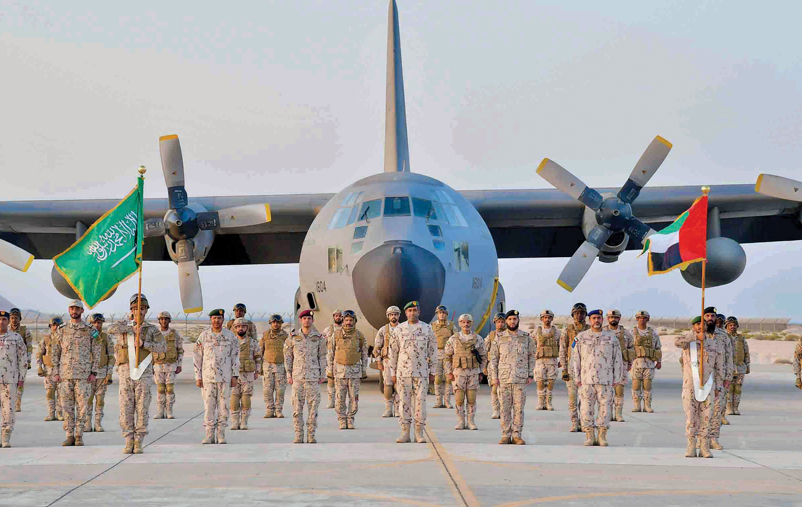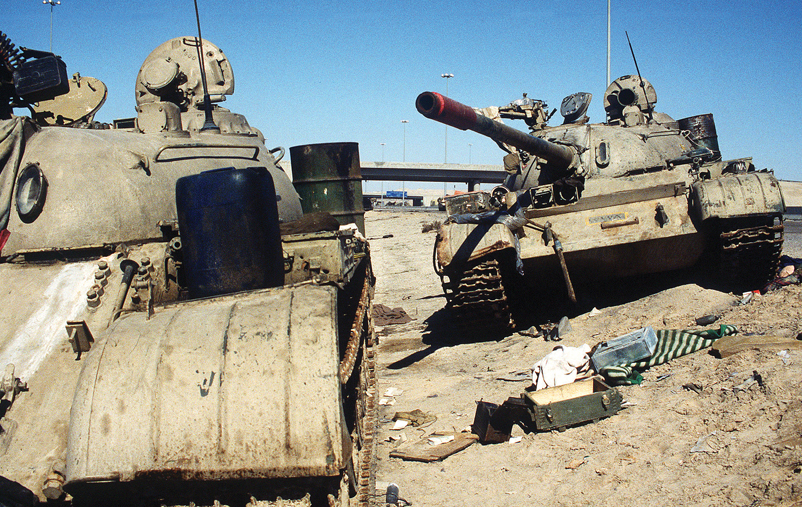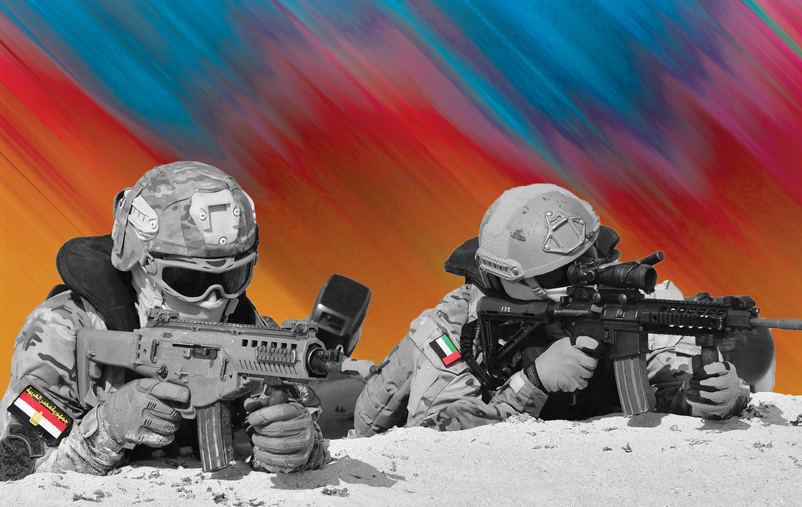When it is difficult for the state to fight a war on its own, it resorts to alliances with other states of common interests, as well as states with high combat capabilities that possess advanced armament systems. Alliances are usually created to address an imbalance of power, and the history of major wars is linked to the history of large alliances, as it appeared. in the two world wars.
The phenomenon of military alliances is as old as history, as there were alliances between tribes and population groups in the pre-state stage, but the modern concept of military alliances is related to the state and international organizations, and it means an agreement between two or more states on specific military and security measures to protect the allied states from a threat or an aggression, and it may be in the form of a formal agreement, declared or not, whereby two states, or a group of states, pledge to cooperate with each other in the field of joint use of their military capabilities against a particular states or state.
Military operations in the conditions of modern war are characterized by the high speed of the development of events, and the means and capabilities that are used to secure the attack, are used at the same time to achieve the defense of friendly forces targeted by the enemy, as well as the use of electronic warfare means, whether for support or obstruction.
Joint operations depend on the basis of distributing offensive firepower among several units that participate in one formation, and the combat group may be made up of ground, air and sea forces, and this distribution allows the commander of the combat group to choose the best weapon to attack any target, and the automated command and control system helps the commander of this combat formation to a large extent, as the response may not come from the platform on which he is on board, but may be from any naval, air or land units within the formation under his command.
Joint exercises
Joint training is one of the training tasks that are carried out jointly with friendly countries, with the aim of uniting efforts in joint combat actions. Joint exercises are divided into several types, including:
Trainings are conducted between the forces of countries that do not have common interests or any political treaties, but are linked by special cooperation protocols.
Trainings that take place between countries with common national interests, or allied countries, and this type of training is mainly concerned with issues of command, control and management of joint operations, with the purpose of unifying and homogenizing forces in terms of combat doctrines, fighting methods, armament, and organizing cooperation, to confront common threats, and an example that is the exercises between the countries of the Gulf Cooperation Council, or between the countries of the North Atlantic Treaty Organization (NATO).
Trainings between several countries that are not linked to common interests, but cooperate together to serve one goal, for example the joint exercises of peacekeeping forces.

The joint training process stages:
1- The stage of preparation, preparation and planning, as the main factor in the success of joint exercises is the preparation and good management of these exercises through coordination conferences between the parties participating in the exercises.
2- The stage of managing combat operations.
3- The stage of actual use of weapons.
4- The stage of evaluation and analysis.
Joint operations planning
There are many objectives of joint operations, which differ according to the size of the forces, the level of their training, and the type of participating countries. The most important of these objectives are:
-Training on tasks that are difficult to carry out with the available capabilities of one country, for example, confronting a hostile naval landing in light of air supremacy and hostile electronic warfare procedures, carrying out naval landing operations in the enemy’s territory, refueling at sea, and how to aim at distant targets, using the information of command-and-control aircraft.
Inventing new fighting methods, as a result of the differing combat doctrines of the forces participating in the training.
Identifying new theaters of operations, as joint exercises may take place outside the country.
Dealing with new weapons and equipment.
Adaptation to tactics of troops of other countries.
Gaining and exchanging practical experie nces in planning and managing hostilities.
Command and control
Modern command and control systems demonstrate the areas of operations in the planning stage of operations. In the case of joint operations, the risk of interference is high. Units in the area of operations during the attack are at the highest levels of exposure, as the specific points for docking of ships and aircraft, areas of fire support and amphibious ships, mine-sweeping areas, and friendly no-fly zones are likely to change between a certain stage and another. Therefore, the ability of the command-and-control system to display and maintain these areas, along with previously planned variables, is of utmost importance.
Also, displaying patrol areas or lines effectively helps in planning and interception operations, so that it can be carried out more accurately, efficiently and effectively by modern command and control systems. Also, modern command and control systems choose the appropriate steps in the event of an imminent attack and provide the best options for the situation. Such as spreading hoax targets, or using electronic warfare devices.
Coordination of joint operations requires advanced command and control systems. The US Central Field Battle Management System (TBMCS), which was operationally deployed in 2002, provides a suite of software for managing, planning, and coordinating joint air campaigns, including integrating tanker aircraft, helicopters, drones, and even cruise missiles. Several American companies have designed network-centric warfare simulation models that can be used in the field, where airborne systems are linked to land and sea systems, with the aim of providing a continuous and up-to-date picture of the battlefield, not only for command-and-control centers, but also for all field commanders, at the same time.
One of the critical problems in the areas of detection and reconnaissance, the armed forces face time-critical mobile targets, especially when there is a need to detect valuable targets at a critical time, such as ballistic missile launchers and mobile air defense systems. This requires the integration of sensors with the weapon systems that will deal with these targets, so that they can be destroyed by using precision guided projectiles, within a time not exceeding several minutes from their detection.
It is noted that the networking process is limited, as it is only possible to link the systems produced by the same company, or at best, the systems used by the forces of the same service (for example, the Air Force), and this has led to an increased need to develop networking systems through standardization of different systems, and the possibilities of interoperability between them in joint operations, especially systems that provide information shared by different parties in the battlefield, automated command and control systems, and systems for assessing losses resulting from bombing operations. Many of the current systems cannot interoperate with other systems, especially reconnaissance aircraft, satellites, ground stations that provide intelligence services, ground detection systems, and digital data transmission systems.

Unified leadership role
The American General Dwight Eisenhower is one of the military leaders who excelled in leading the coalition forces. During World War II, he was the commander of more than three million coalition forces; among the leaders of the coalition armies were very strong personalities, such as the American General George Patton, and the English Marshal Montgomery, these were seasoned leaders in battles. Leadership of the allied forces always needs caution, because commanders of these forces are usually in direct contact with the leaders of their governments. For example, during the First World War, General Pershing, the commander of the American forces, was under the command of French Marshal Foch. Foch asked Pershing to divide the American units to replace the losses of the coalition forces, but Pershing refused, and insisted that the American forces fight as one unit, otherwise they will not fight, and President Wilson supported him in his decision. This means that Eisenhower had to be very careful in his command style, despite the fact that he enjoys the title of Supreme Commander of the Allied Forces. What made his problem complicated was that he did not personally participate in the battles. During World War I, he was a trainer, and his task was to equip Artillery forces to the battles in France. Although he tried many times to go to France, he spent the war period in America, however, Eisenhower was able to lead this huge number of soldiers of different nationalities in an unprecedented invasion. The main reason for his success was his use of the negotiation method, as this enabled him to obtain the support of the leaders of the second major country of the coalition. He was able to influence the British by giving them the highest positions under his command.
Diversification of weapon sources
The unification of the source of weapons means the ability to exchange them between different parties of the coalition, use them with ease and simplicity during joint training, and the possibility of maintenance and repair. During the Cold War, all the planes, tanks, missiles, cannons, vehicles and ammunition used by all the Warsaw Pact countries were all built to Soviet specifications, so there were no difficulties in exchanging them between the Allies.
Friendly fire
Due to the multiplicity of sources of armament, joint training contributes, to a large extent, to providing an appropriate atmosphere for unifying capabilities between elements and equipment operating on one theater, without necessarily having joint field or combat experience. There is already a fundamental difference between drawing intervention scenarios and the field situation, where answers are sometimes mixed with reactions, and roles are distributed randomly, with all the negatives that can result from that, hence the importance of prior coordination between the approved training systems. The danger in the absence of the necessary coordination may go beyond reducing combat effectiveness to exposing combatants to the loss of life on the part of “friendly” forces, an issue that officials in the training sectors stress the need to avoid.
The common factor that preoccupies the thinking of military planners in modern joint wars is the complex scenario of the systems, weapons, and the abundance of equipment on the battlefield, its skies and seas, in a way that has complicated the problem of distinguishing the enemy from the friend, due to the complexity and density of the electromagnetic spectrum, and the short times available for reaction procedures, which requires a high degree of response speed, to achieve a successful confrontation. If the concept was previously limited to identification systems between planes, and between planes and naval vessels, the lessons learned from modern wars imposed the necessity, and even inevitability of the existence of systems of identification up to the level of the soldier, where the term “friendly fire” appeared, especially in the conditions of joint night operations. For special forces, where visibility is reduced, details fade, and backgrounds overlap, these systems enhance self- confidence of the soldier, and rid him of fear.
Night battles have made it difficult to provide familiarity between friendly forces, as there is confusion in distinguishing personnel and equipment, hence the use of special thermal emitters operating on one side of the infrared spectrum, known as the IR beacon, which can be installed on soldiers’ helmets, and in the rear of vehicles and tanks, and they use special filters that can be monitored by thermal devices, so that soldiers and friendly targets can be identified to a significant degree, so friendly fire injuries are greatly reduced, and air strikes can be avoided, as well as determining the locations of landings, and targets that are designated, even in the darkest periods of nights.
Among the effective uses of laser beacons, which are sources of laser radiation at a specific wavelength, is the possibility of providing identification between the missiles that ride the laser beam, and between targets, especially in urban warfare, where agents or members of the special forces throw the laser beacon near the target to be destroyed, which could be a gathering headquarters for fighters, an ammunition store, or a vehicle with a wanted person, then friendly planes direct their missiles towards Target.
Given the problems of identification systems that distinguish between friendly and hostile targets, and the inadequacy of these systems for use in some circumstances, the new trend is to use the radar signature technology. It is known that the signals reflected from the target include a lot of information about it. By appropriate processing of these signals, it is possible to extract enough information about the “shape of the target” so that it can be identified, and this method was used in the program of the US space agency “NASA” to give a clear picture of the satellites. By comparing the shape of the target with the radar signatures of the different targets kept in the “library” or “memory” of the radar device, the target can be identified.
During the war to liberate Kuwait, in 1991, a large percentage of the casualties of American and British soldiers were caused by friendly forces fire, and research in this field showed that the biggest reason for this was the wrong identification of the target by the weapon platform, and then it was immediately revealed that the that reason behind engagement with friendly targets was the result of a lack of information about the locations and positions of the allied forces, as well as the wrong directing of fire or the inability to circulate the change in plans or the change in the military situation.
The last American war on Iraq witnessed many accidents, including what was the result of two planes colliding together, or one of the planes being hit by a Patriot missile, or one of the armored vehicles being hit by friendly aircraft fire. The British and American armies opened an investigation in an attempt to uncover the circumstances of the accident that killed 3 British soldiers, and injured two others by friendly fire as a result of the bombing of a US plane in southern Afghanistan on August 23, 2007. The investigation focused on whether the American pilots were given wrong information about the British positions, or they misread the information, or they dropped the bomb by mistake. An American F-15 plane had struck the British soldiers while it was trying to help them in fierce fighting that broke out near the huge Kajaki Dam, where these soldiers were fighting to secure it from Taliban militants. After the combatant forces – tracking technology networks proved their usefulness in reducing the incidence of fire from friendly forces in Afghanistan and Iraq, the Pentagon decided to expand the use of this technology in all branches of the American armed forces, and this technology relies on satellite communication to provide tanks and ground command and control centers with the latest locations of American forces and allied forces. The US forces have provided combat vehicles, command centers and helicopters in their operations in Iraq and Afghanistan with about 1,400 friendly force tracking systems, which have saved the lives of many members of friendly forces. Commanders in the field have appreciated these systems.
« By: Major General Dr. Ali Muhammad Ali Ragab
(Military researcher and strategist)













